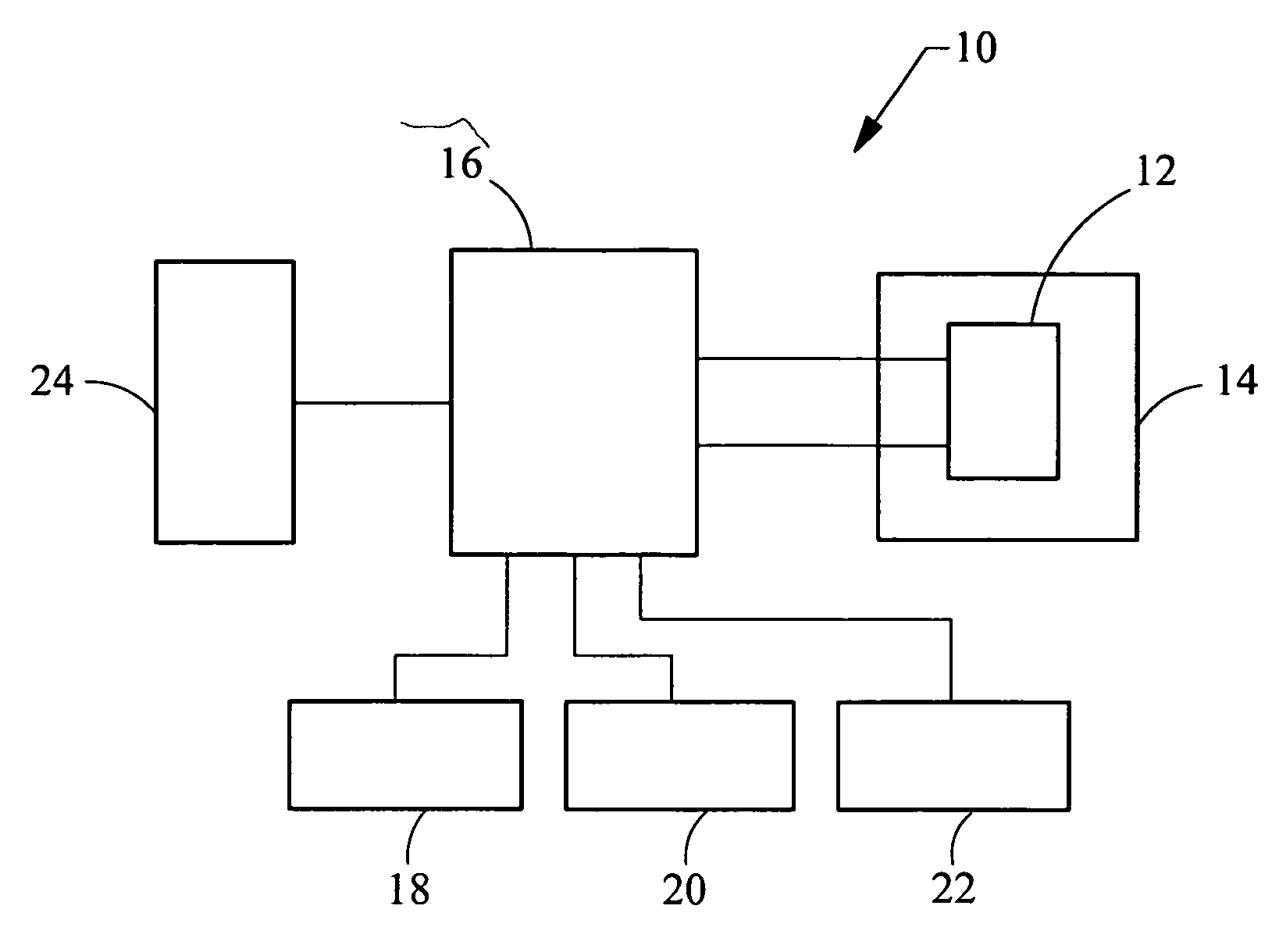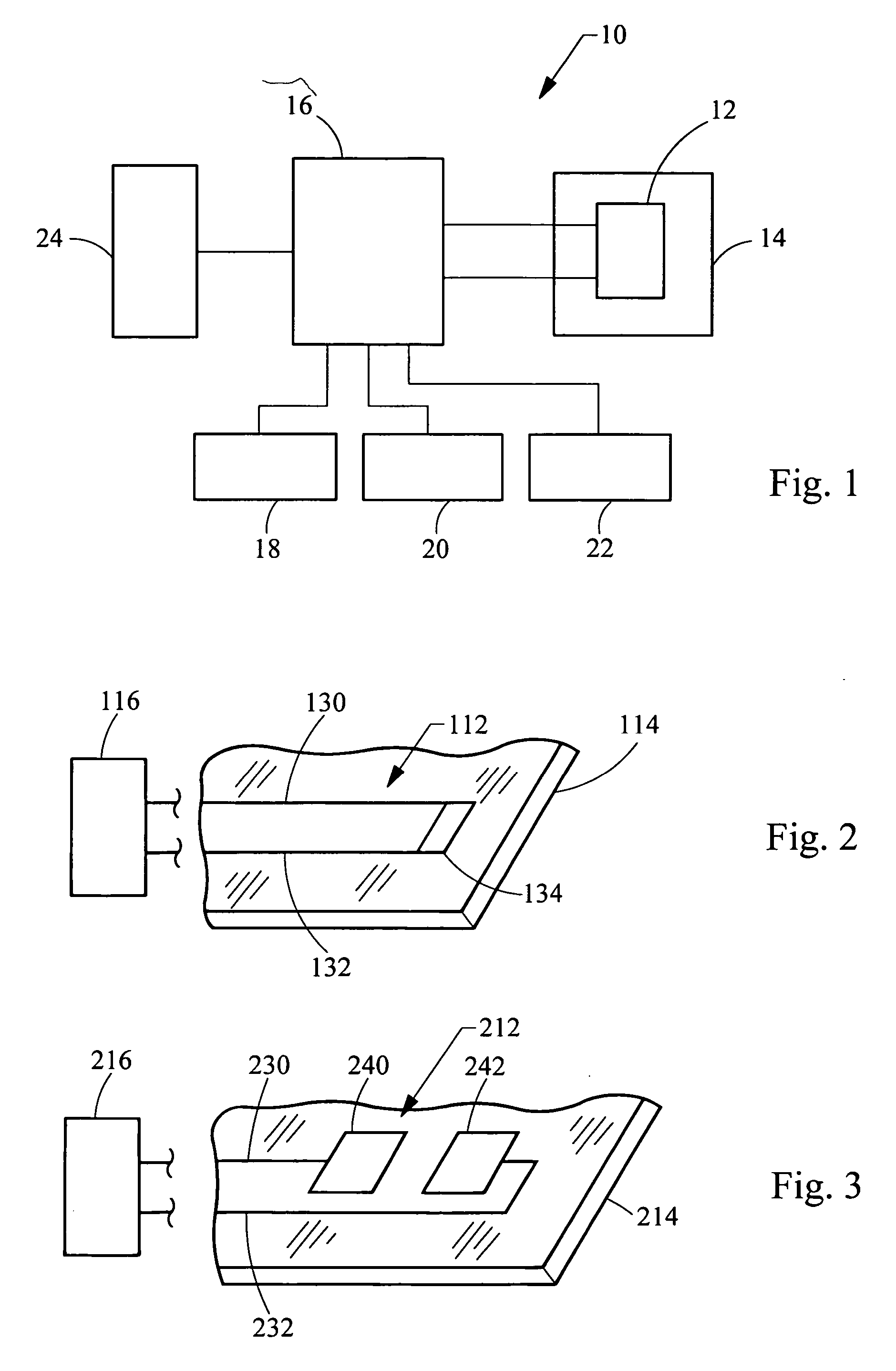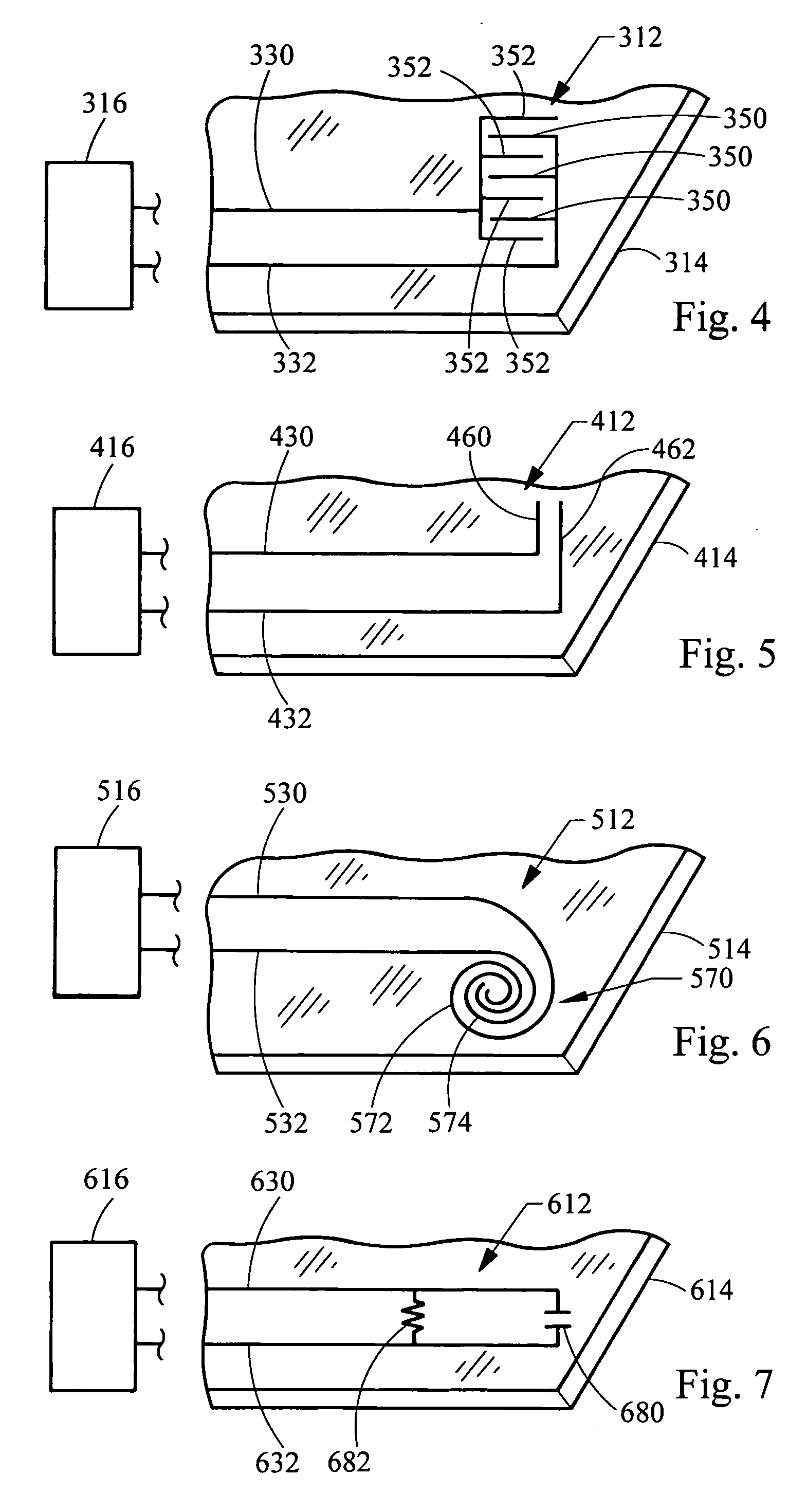Printable sensors for plastic glazing
a technology of plastic glazing and sensors, applied in the field of printing, can solve the problems of increasing costs, insufficient inventory, affecting the performance and accuracy of the sensor,
- Summary
- Abstract
- Description
- Claims
- Application Information
AI Technical Summary
Problems solved by technology
Method used
Image
Examples
Embodiment Construction
[0020] Referring now to FIG. 1, a system embodying the principles of the present invention is illustrated therein and designated at 10. The system 10 includes a sensor 12 integrated with a glazing panel of a window assembly 14 and in electrical communication with a controller 16. The sensor 12 may be a temperature sensor, a moisture sensor, or other sensor for detecting environmental changes on the window 14. As such, the sensor 12 may produce a change in resistance, capacitance, or other electrical property that may be detected by the controller 16 in response to one or more environmental changes.
[0021] The window assembly 14 may comprise a common, transparent glass panel. Although, preferably the window assembly 14 comprises a transparent plastic panel, for example a polycarbonate panel. Accordingly, the sensor 12 may be printed or applied to the panel using known techniques and a conductive ink or conductive polymer, such as those known in the industry for being applied to glass...
PUM
| Property | Measurement | Unit |
|---|---|---|
| conductive | aaaaa | aaaaa |
| transparent | aaaaa | aaaaa |
| resistance | aaaaa | aaaaa |
Abstract
Description
Claims
Application Information
 Login to View More
Login to View More - R&D
- Intellectual Property
- Life Sciences
- Materials
- Tech Scout
- Unparalleled Data Quality
- Higher Quality Content
- 60% Fewer Hallucinations
Browse by: Latest US Patents, China's latest patents, Technical Efficacy Thesaurus, Application Domain, Technology Topic, Popular Technical Reports.
© 2025 PatSnap. All rights reserved.Legal|Privacy policy|Modern Slavery Act Transparency Statement|Sitemap|About US| Contact US: help@patsnap.com



